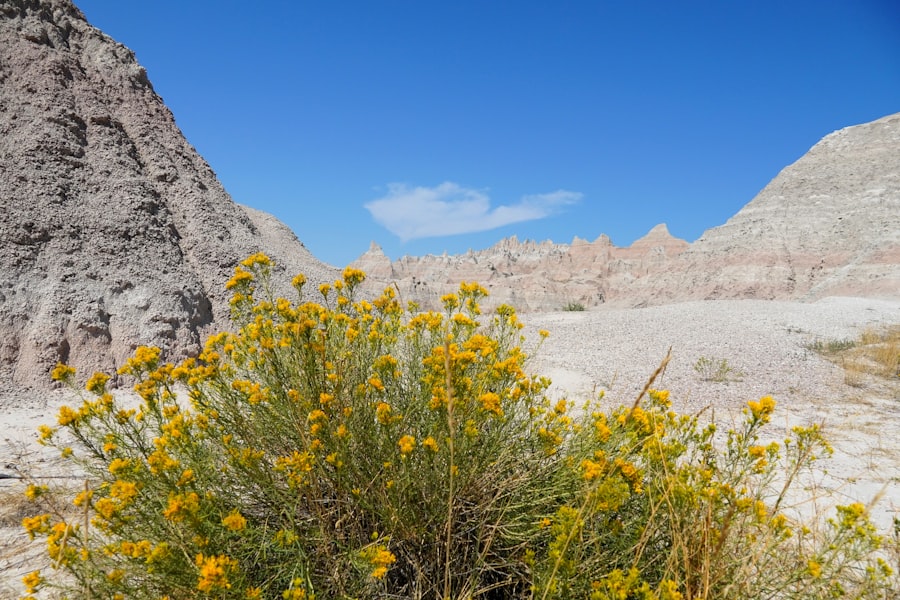Download links
How to install Discovering the Enigmatic Chocolate Hills APK?
1. Tap the downloaded Discovering the Enigmatic Chocolate Hills APK file.
2. Touch install.
3. Follow the steps on the screen.
Description
The Chocolate Hills, a geological wonder located in the province of Bohol in the Philippines, have captivated the imagination of both locals and tourists alike. Their name derives from the lush green grass that blankets these hills during the rainy season, which turns a rich brown hue in the dry season, resembling mounds of chocolate. The origin of these hills is steeped in both scientific inquiry and local folklore, making them a subject of fascination for geologists and storytellers alike.
The formation of the Chocolate Hills is believed to date back millions of years, with various theories attempting to explain their unique shape and distribution. One prevalent theory suggests that they are the result of the uplift of coral deposits and limestone, shaped by the forces of erosion over time. This geological process has created over 1,200 hills, each varying in height and size, creating a surreal landscape that appears almost otherworldly.
The hills are not only a natural marvel but also a testament to the dynamic processes that shape our planet.
Key Takeaways
- The Chocolate Hills in the Philippines are believed to have been formed from the tears of a giant named Arogo, who cried over the death of his mortal beloved.
- The geological formation of the Chocolate Hills is a result of the uplift of coral deposits and the action of rainwater and erosion over millions of years.
- The unique flora and fauna of the Chocolate Hills include various species of plants, birds, and mammals, some of which are endemic to the region.
- The Chocolate Hills hold cultural significance to the local community, with legends and myths passed down through generations, shaping their beliefs and traditions.
- Tourist activities and attractions in the Chocolate Hills include hiking, bird watching, and visiting the viewing deck for panoramic views of the hills.
The Geological Formation of the Chocolate Hills
Formation through Marine Sedimentation and Uplift
Primarily composed of limestone, these hills were formed through a combination of marine sedimentation and subsequent uplift. During the Pleistocene epoch, rising sea levels led to the deposition of coral reefs in what is now Bohol.
Shaping through Erosion
As tectonic activity caused the land to rise, these coral formations were exposed to the elements. Erosion played a crucial role in shaping the hills into their current conical forms. Rainwater, rich in carbonic acid due to its interaction with carbon dioxide in the atmosphere, gradually dissolved the limestone, creating depressions and valleys.
Unique Topography and Climate
time, this process led to the formation of distinct hilltops that stand out against the surrounding landscape. The unique topography is further enhanced by the region’s tropical climate, which contributes to the rapid growth of vegetation that covers the hills during certain seasons.
The Unique Flora and Fauna of the Chocolate Hills

The Chocolate Hills are not just a geological phenomenon; they also host a diverse array of flora and fauna that thrive in this unique environment. The hills are primarily covered with grass, which turns brown during the dry season, but they also support various species of plants that are adapted to the local climate. Among these are endemic species that can only be found in this region, contributing to Bohol’s rich biodiversity.
In addition to plant life, the Chocolate Hills are home to numerous animal species. Birds such as the Philippine tarsier, one of the world’s smallest primates, can be found in the surrounding forests. These creatures are known for their large eyes and nocturnal habits, making them a popular attraction for wildlife enthusiasts.
The hills also provide habitat for various reptiles and insects, which play essential roles in maintaining the ecological balance of this unique environment. The interplay between flora and fauna creates a vibrant ecosystem that is both fascinating and vital for conservation efforts.
The Cultural Significance of the Chocolate Hills to the Local Community
| Aspect | Metrics |
|---|---|
| Tourism | Number of tourists visiting annually |
| Local Economy | Revenue generated from tourism |
| Cultural Events | Number of cultural events held at the Chocolate Hills |
| Community Pride | Percentage of locals who consider the Chocolate Hills as a source of pride |
| Conservation Efforts | Amount of funds allocated for the preservation of the Chocolate Hills |
The Chocolate Hills hold significant cultural importance for the local communities in Bohol. They are not merely a tourist attraction; they are woven into the fabric of local folklore and traditions. Many stories have been passed down through generations, attributing mystical qualities to these hills.
For instance, one popular legend tells of two giants who engaged in a fierce battle, hurling stones at each other until they eventually reconciled, leaving behind the hills as a testament to their conflict. These cultural narratives contribute to a sense of identity among the local population. The hills are often featured in local art, music, and festivals, serving as symbols of pride for Boholanos.
Additionally, they play a role in local economic activities, as tourism centered around the Chocolate Hills provides livelihoods for many residents. This connection between culture and nature underscores the importance of preserving these natural wonders for future generations.
Exploring the Chocolate Hills: Tourist Activities and Attractions
Tourism is a vital aspect of the Chocolate Hills experience, drawing visitors from around the globe who seek to explore this natural wonder. The most popular way to appreciate the beauty of the hills is from designated viewing points, such as the Chocolate Hills Complex and the view deck at Barangay Buenos Aires. These vantage points offer panoramic views that showcase the undulating landscape, allowing visitors to capture stunning photographs that encapsulate their experience.
In addition to sightseeing, various activities cater to adventure seekers and nature lovers alike. Hiking trails wind through the hills, providing opportunities for exploration and immersion in the surrounding environment. Some tour operators offer guided tours that include visits to nearby attractions such as the Loboc River and Tarsier Sanctuary, creating a comprehensive experience that highlights Bohol’s natural beauty and cultural heritage.
For those seeking a more leisurely experience, local eateries serve traditional Filipino cuisine, allowing visitors to savor regional flavors while enjoying views of this breathtaking landscape.
Preserving the Natural Beauty of the Chocolate Hills

As tourism continues to grow in popularity, preserving the natural beauty of the Chocolate Hills has become increasingly important. Local government units and environmental organizations have implemented various conservation initiatives aimed at protecting this unique ecosystem from degradation caused by human activity. These efforts include reforestation projects, waste management programs, and educational campaigns designed to raise awareness about environmental stewardship among both locals and visitors.
Sustainable tourism practices are also being promoted to ensure that economic benefits do not come at the expense of ecological integrity. By encouraging responsible travel behaviors—such as minimizing waste and respecting wildlife—stakeholders aim to strike a balance between tourism development and environmental conservation. This approach not only safeguards the natural beauty of the Chocolate Hills but also enhances visitors’ experiences by fostering a deeper appreciation for this remarkable landscape.
The Enigmatic Legends and Myths Surrounding the Chocolate Hills
The allure of the Chocolate Hills extends beyond their physical beauty; they are steeped in legends and myths that enrich their cultural significance. One such tale involves two giants named Arogo and his beloved who wept upon her death, creating the hills as a monument to their love. This narrative not only adds an element of romance but also reflects themes of loss and remembrance that resonate deeply within local culture.
The legends surrounding the Chocolate Hills often embody moral lessons or cultural values that are integral to Boholano identity. As such, they play an essential role in fostering community cohesion and preserving cultural heritage amidst modernization and globalization.
The Future of the Chocolate Hills: Conservation Efforts and Sustainability
Looking ahead, ensuring the sustainability of the Chocolate Hills requires ongoing commitment from various stakeholders, including government agencies, local communities, and environmental organizations. Conservation efforts must adapt to changing circumstances such as climate change and increasing tourist numbers while maintaining ecological integrity.
Moreover, integrating sustainable practices into tourism development will be crucial for preserving this natural wonder for future generations. This includes promoting eco-friendly accommodations, supporting local artisans and businesses, and implementing visitor management strategies that minimize environmental impact. By fostering a culture of sustainability around the Chocolate Hills, stakeholders can ensure that this iconic landscape continues to inspire awe and wonder for years to come while remaining an integral part of Bohol’s cultural heritage.
FAQs
What are the Chocolate Hills?
The Chocolate Hills are a geological formation located in the Bohol province of the Philippines. They are made up of around 1,200 to 1,776 conical limestone hills, which are covered in green grass that turns brown during the dry season, giving them a chocolate-like appearance.
How were the Chocolate Hills formed?
The exact formation process of the Chocolate Hills is still a subject of debate among geologists. However, it is widely believed that they are the result of the uplift of coral deposits and the action of rainwater and erosion over millions of years.
What is the significance of the Chocolate Hills?
The Chocolate Hills are a major tourist attraction in the Philippines and are considered a natural wonder. They have been declared the country’s third National Geological Monument and are included in the Tentative List for UNESCO World Heritage Sites.
Can visitors explore the Chocolate Hills?
Yes, visitors can explore the Chocolate Hills by climbing the viewing deck in the town of Carmen, which offers panoramic views of the hills. There are also hiking trails and ATV tours available for those who want to explore the area more closely.
Are there any legends or myths associated with the Chocolate Hills?
One popular legend about the formation of the Chocolate Hills involves two giants who were throwing rocks and sand at each other in a fit of rage, and when they reconciled, they left behind the hills. This legend is a part of the local folklore and adds to the mystique of the Chocolate Hills.





